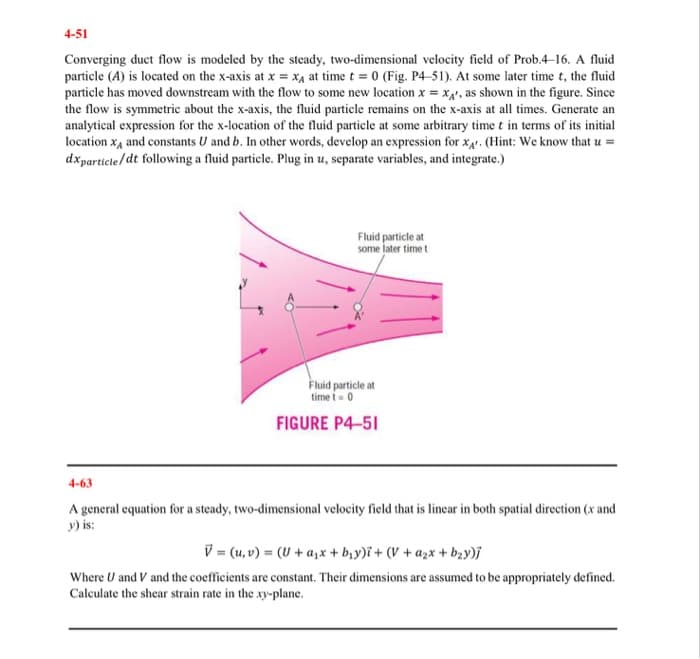at x = XA at time t = 0 (Fig. P4 the flow to some new location x is, the fluid particle remains on on of the fluid particle at some a. other words, develon an expressi
at x = XA at time t = 0 (Fig. P4 the flow to some new location x is, the fluid particle remains on on of the fluid particle at some a. other words, develon an expressi
Related questions
Question

Transcribed Image Text:4-51
Converging duct flow is modeled by the steady, two-dimensional velocity field of Prob.4–16. A fluid
particle (A) is located on the x-axis at x = X4 at time t = 0 (Fig. P4-51). At some later time t, the fluid
particle has moved downstream with the flow to some new location x = x4', as shown in the figure. Since
the flow is symmetric about the x-axis, the fluid particle remains on the x-axis at all times. Generate an
analytical expression for the x-location of the fluid particle at some arbitrary time t in terms of its initial
location x, and constants U and b. In other words, develop an expression for x4. (Hint: We know that u =
dxparticte/dt following a fluid particle. Plug in u, separate variables, and integrate.)
Fluid particle at
some later time t
Fluid particle at
time i-0
FIGURE P4-51
4-63
A general equation for a steady, two-dimensional velocity field that is linear in both spatial direction (x and
y) is:
V = (u, v) = (U + a,x+ b,y)i+ (V + azx + bąy)j
- azx-
Where U and V and the coefficients are constant. Their dimensions are assumed to be appropriately defined.
Calculate the shear strain rate in the xy-plane.
Expert Solution
This question has been solved!
Explore an expertly crafted, step-by-step solution for a thorough understanding of key concepts.
This is a popular solution!
Trending now
This is a popular solution!
Step by step
Solved in 2 steps with 6 images
